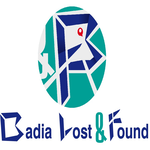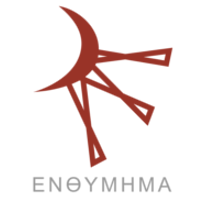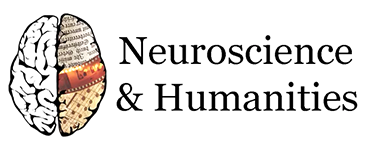Partner Institutions
The Italian Academy was created in 1991 on the basis of a charter signed by the President of the Republic of Italy and the President of Columbia University. It was conceived as a center for advanced research in areas relating to Italian culture, science and society.It was also intended to provide a locus for collaborative projects between senior Italian and American scholars, particularly those open to interdisciplinary research.
Given its international scope and its long-standing commitment to all aspects of Italian culture and society, Columbia was seen as an especially appropriate context for such a venture. Funding for the Academy came from an endowment established at Columbia in 1991 by the Republic of Italy; since then, a variety of foundations and private donors have provided other endowments and gifts. McKim Mead and White’s 1927 Casa Italiana, elegantly reconstructed by Italo Rota and Sam White in 1993, is the home of the Academy. It provides an exceptional series of offices for the Academy’s Fellows, as well as housing a library and a magnificent theater, in Neo-Renaissance style, in which major academic, theatrical and musical events regularly take place.
At the heart of the work of the Academy lies its interdisciplinary Fellowship Program. Fellowships are open to senior scholars at the post-doctoral level and above who wish to devote a semester or a full academic year to genuinely innovative work. The most advanced part of the Fellowship Program is the Academy’s ongoing Project in Humanities and Neuroscience, in which scholars in both the humanities and the sciences work together in assessing the significance of the latest developments in genetics and the neurosciences for the humanities, and vice-versa. The Academy also serves as the chief reference point in the United States (as well as a frequent meeting place) for all links between the worlds of higher education in Italy and the US. Furthermore, its theater, library, and other public spaces offer important locations for a variety of performances, concerts and exhibitions designed to enhance cultural relations between the Republic of Italy and the artistic, political, and academic communities of New York and the United States.
Badia Lost&Found is the brand that brings the places of culture to the people, that makes them discover forgotten stories in a new, contemporary way, a new way of sharing, experiencing and participating in Art and Culture.
It all began in 2017, with the ideation of the first Urban Art Park in the province of Syracuse, which transformed Lentini in one of the most colorful towns in Sicily, thanks to the participation of renowned street artists that gave new life to the historical centre of the town.
First born as an organization of citizens and volunteers operating mainly in the Badia district of Lentini, in 2020 Badia Lost&Found became a cooperative made up of professionals in the Arts, Cultural Heritage and Communication. Today, our activities focus on the promotion, development, and enhancement of the territory of Lentini, and also in the organization of art exhibitions and cultural events, with the aim of making our cultural heritage a place of participation and growth.
Our aim is to regenerate our vast cultural heritage, reclaim it from abandonment and neglect, improve it and return it to the citizens, as we are doing in Palazzo Beneventano. One of the most important historical sites in Lentini, the aristocratic estate of Palazzo Beneventano was left in total abandonment for many years. Thanks to a joint collaboration between the municipality, the volunteers and private companies, it is now the heart of Lentini’s artistic and cultural life, a multi-purpose centre, a place for events and exhibitions. Badia Lost&Found is currently undergoing through the process of a special partnership with the municipality of Lentini for the management of the location, making Badia Lost&Found one of the first 40 organizations in Italy to adopt this kind of partnership.

Cognitive Futures in the Arts and Humanities is an international, interdisciplinary research network. It was originally supported by the UK’s Arts and Humanities Research Council (AHRC), 2012-14, and continues to bring together researchers at all career stages from fields such as literary studies, narrative theory, poetics, linguistics, philosophy of mind, phenomenology, history, the history of art, film, performing arts and theatre studies, and beyond, whose work relates to, informs, or is informed by aspects of the cognitive sciences broadly conceived. To date, there have been major international conferences at the universities of Bangor, Durham, Oxford, Helsinki, and Stony Brook, NY.
For more info: https://coghumanities.

Welcome to the new website of the Italian Society of Neuroaesthetics “Semi Zeki“ (Società Italiana di Neuroestetica “Semir Zeki”). The Society was founded in 2005 in Italy and it is named after its Honorary President, Prof. Semir Zeki, who pioneered the field of Neuroaesthetics (or Neuroesthetics).
Artists and scientists of international reputation have joined the Association.
In this website you will find the activities of our members, as well as interviews, articles and exhibitions of interest.
 Neurohuman.com features interviews with cognitive and affective neuroscientists discussing their views of the Neuro-Humanities and its possibilities. On the site, interviewees discuss the potential problems and benefits of applying neuroscience outside of the neurosciences.
Neurohuman.com features interviews with cognitive and affective neuroscientists discussing their views of the Neuro-Humanities and its possibilities. On the site, interviewees discuss the potential problems and benefits of applying neuroscience outside of the neurosciences.
Leibniz-Zentrum für Literatur- und Kulturforschung (ZfL) is a humanities institute for literary studies in interdisciplinary contexts that draw from a cultural studies framework. Its methods also engage with the structural transformations within historical-hermeneutic subject areas that have taken place in recent decades. In contrast to the study of literature at universities, predominantly organized by nationality, the ZfL fosters a broad concept of literature. It uses interdisciplinary tools to fundamentally question the etiology of various literary concepts, their potential for the future, and the relationship between literature and other arts or cultural practices.
This is carried out in the three program areas History of Theory, World Literature, Knowledge of Life, and in the Focus Projects. While literature remains a primary object of investigation in all areas, the institute also opens up new epistemological fields, new modes of knowledge, and new sets of questions in other disciplines. Our overarching objective is to explore the development of alternative descriptions of modernity and how they fit into a broader historical context. As a relatively small, independent institute, the ZfL sees itself as a vital contributor to national and international research communities and as a critical observer of an ever-changing academic landscape.
For more info: https://www.zfl-berlin.
Rivista internazionale di critica, teoria e filosofia della letteratura
Myrifield Institute for Cognition and the Arts promotes collaboration among researchers engaged in exploring the role of the arts in the development of human cognition.
 Neurohumanities is a nascent field that invites a dialogue between neuroscience and all areas of the humanities. Researchers in this area explore complex models of language and the brain that incorporate a more interactive view of neurological processes in cultural context; the causes and consequences of stereotyping and system justification; the role of religious beliefs and political ideology; and artificial intelligence and the potential for creating an intelligent robotic entity.
Neurohumanities is a nascent field that invites a dialogue between neuroscience and all areas of the humanities. Researchers in this area explore complex models of language and the brain that incorporate a more interactive view of neurological processes in cultural context; the causes and consequences of stereotyping and system justification; the role of religious beliefs and political ideology; and artificial intelligence and the potential for creating an intelligent robotic entity.
Duke is one of the first universities to establish a program in this area. The Neurohumanities Research Group, co-sponsored by the Franklin Humanities Institute and the Duke Institute for Brain Sciences, brings humanists and neuroscientists into dialogue on issues that concern both groups though researched and taught with different discourses, methodologies, and technologies. The group capitalizes on Duke’s strengths in humanities and the neurosciences to develop a common language of discourse, generate new research questions, and create new educational initiatives exploring this now-approachable frontier.
Also working in this area, Duke faculty in the Duke Divinity School seek to advance theological understanding of the questions and insights being raised by current pioneering research in neuroscience. Their work in the area of theology and neuroscience addresses significant questions that touch on many disciplines, including neuro-oncology, child development, philosophy, theology, and psychiatry.
For more info: FHI Health Humanities Lab (HHL) at Duke University
 Art Milu: Individuelle Bilder für Individuelle Menschen- Abstrakte und figurale Bilder und Collagen in Acryl.
Art Milu: Individuelle Bilder für Individuelle Menschen- Abstrakte und figurale Bilder und Collagen in Acryl.
La neuroetica è un campo disciplinare giovane e ancora fluido, dai confini elastici, nato dallo straordinario sviluppo delle neuroscienze cognitive e dalle loro potenziali ricadute teoretiche e pratiche, a livello etico, legale, sociale e politico.
Il carattere interdisciplinare fa della neuroetica uno spazio di intersezione tra vari campi del sapere – dalle neuroscienze alla filosofia, dalla psicologia al diritto, dall’estetica alla medicina, dalla genetica e alla teoria dell’evoluzione – tale da renderla naturalmente destinata a una collaborazione tra ricercatori di diversa impostazione, uniti dalla volontà di arrivare a una migliore comprensione dell’essere umano.
La Società italiana di neuroetica e filosofia delle neuroscienze (SINe), nata a Milano il 3 luglio 2013, attualmente presieduta da Michele Di Francesco, con Alberto Oliverio come presidente onorario, vuole promuovere la ricerca e la divulgazione coinvolgendo il maggior numero di studiosi.
Per maggiori informazioni: Società Italiana di Neuroetica e Filosofia delle Neuroscienze © 2013 (societadineuroetica.it)
Literature, Cognition and Emotions (LCE) is an interdisciplinary hub that brings together literary studies, linguistics, psychology and neurosciences in a new conversation about literature. LCE organises a reading group, annual lectures, talks, teaching events and workshops. For more info: Literature, Cognition and Emotions (LCE) – Literature, Cognition and Emotions (LCE) (uio.no)
 The International Distributed Little Red Hen Lab™ is a global big data science laboratory and cooperative for research into multimodal communication.
The International Distributed Little Red Hen Lab™ is a global big data science laboratory and cooperative for research into multimodal communication.
Red Hen’s main goal is theory of multimodal communication. See Overview of the Red Hen Vision and Program.
Red Hen’s secondary goal is the development of computational, statistical, and technical tools for big data science on multimodal communication. See e.g. Red Hen Lab’s Google Summer of Code 2021 Projects page.Red Hen’s tertiary goal is pedagogy: see her Τέχνη Public Site—Red Hen Lab’s Learning Environment
For more info: Red Hen Lab

MCCA is an interfaculty research team for culturological multimodal analysis. Within the research team, the following [Projects] are realized. By multimodal analysis, we understand an integrated analysis od communicative displays (verbal, vocal and kinetic displays). When we analyze some material from culturological perspective, we assume that every communicative activity is deeply imbedded in cultural context.
We treat culture as a complex and dynamic phenomenon that can and must be analyzed on several levels. By this, we mean culturological research, i.e. research in the field of cultural, intercultural and intracultural linguistics. Thus the aim of the research team is to integrate interdiscplinary tools for multimodal analysis, including transcription and annotation methods that would be compatible with existing programmes according to international standards from culturological perspective. An important aspect of our activity is comparative and intercultural work. In this way, we want to create an open platform for the exchange of theoretical, methodological and methodical reflexion in the field.
 Il Laboratorio interdipartimentale N&H dell’Università degli Studi di Parma ha lo scopo di promuovere e sviluppare la ricerca nell’ambito delle relazioni tra le discipline umanistiche e le neuroscienze cognitive.
Il Laboratorio interdipartimentale N&H dell’Università degli Studi di Parma ha lo scopo di promuovere e sviluppare la ricerca nell’ambito delle relazioni tra le discipline umanistiche e le neuroscienze cognitive.
Questo obiettivo è perseguito attraverso la realizzazione di progetti di ricerca scientifica, workshop, seminari, conferenze e convegni, promozioni di reti di ricerca e di Fellowships, costruzione di relazioni nazionali e internazionali con altri Atenei e Centri di ricerca attivi in questo campo, sviluppando rapporti sia con enti e istituzioni di carattere pubblico che privato.
Per maggiori informazioni: (1) Neuroscience & Humanities LAB – UNiversity of Parma | Facebook

Lamberto Puggelli nasce a Milano nel 1938. Si diploma presso l’Accademia dei filodrammatici della città meneghina e poco dopo intraprende la carriera di regista teatrale. Negli anni Sessanta allestisce diversi spettacoli nei migliori teatri d’Europa. Nel ’66 mette in scena la «Turandot» di Puccini; nel 1969 firma la regia de «il Trovatore» di Verdi. Negli anni Settanta inizia una solida e duratura collaborazione con il Piccolo Teatro di Milano. In una prima fase affianca Giorgio Strehler alla regia; in una seconda fase firma insieme allo stesso Strehler gli allestimenti degli spettacoli. In quegli anni, parallelamente, si dedica allo studio di Luigi Pirandello e mette in scena alcune opere del drammaturgo agrigentino. Nel 1972 si occupa della regia dell’opera belliniana «Norma». Due anni dopo cura l’allestimento de «i Masnadieri» di Verdi. Nel 1974 firma la regia de «il Barbiere di Siviglia» di Rossini e un anno dopo torna al teatro di prosa e a Luigi Pirandello con «Così è se vi pare».
Gli anni Ottanta sono segnati dalla realizzazione di un’altra opera verdiana: «la forza del destino». Il decennio successivo è quasi interamente dedicato alla lirica. Dal 1990 a 1996 Lamberto Puggelli cura la regia di quattro spettacoli di successo, alcuni dei quali recentemente ripresi: «Otello», «La Favorita», «La Sonnabula» e «Fedora». Nei primi anni del nuovo millennio Lamberto Puggelli diventa direttore artistico del Teatro Stabile di Catania. Nel 2007 viene licenziato per ragioni mai del tutto chiarite. Un anno dopo fonda l’associazione teatrale Ingresso Libero. Muore a Trecastagni, in provincia di Catania, l’11 agosto 2013.
La Fondazione Lamberto Puggelli promuove la formazione di eccellenza, valorizza e tutela il patrimonio artistico, la biblioteca e l’archivio del Maestro Lamberto Puggelli.
Per maggiori informazioni: (1) Fondazione Lamberto Puggelli | Facebook
 La ricerca e la pratica artistica di Numero Cromatico si fonda sull’approccio scientifico all’arte, con particolare attenzione alle più recenti scoperte neuroscientifiche e ambiti quali neuroestetica, estetica empirica, psicologia sperimentale, letteratura, digital humanities e comunicazione visiva. Le pratiche del gruppo, formato da ricercatori provenienti dal mondo delle arti visive e delle neuroscienze, si sviluppano in diverse direzioni: dalla pittura alle installazioni ambientali, dalle intelligenze artificiali a progetti editoriali, mostre, laboratori ed eventi divulgativi.
La ricerca e la pratica artistica di Numero Cromatico si fonda sull’approccio scientifico all’arte, con particolare attenzione alle più recenti scoperte neuroscientifiche e ambiti quali neuroestetica, estetica empirica, psicologia sperimentale, letteratura, digital humanities e comunicazione visiva. Le pratiche del gruppo, formato da ricercatori provenienti dal mondo delle arti visive e delle neuroscienze, si sviluppano in diverse direzioni: dalla pittura alle installazioni ambientali, dalle intelligenze artificiali a progetti editoriali, mostre, laboratori ed eventi divulgativi.
Il collettivo è fondatore di Nodes, rivista di neuroestetica punto di riferimento per ricercatori di tutto il mondo. A partire dal 2016 il gruppo decide di aprire a Roma uno spazio sperimentale in cui presentare le proprie ricerche al pubblico. Nel 2019 Numero Cromatico ad ArtVerona svolge il primo esperimento di neuroestetica in una fiera d’arte in Italia vincendo il premio i10 come migliore realtà indipendente. Nello stesso anno vince la menzione speciale del premio Creature. Nel 2020 vince il bando Exhibit Program della DGCC MiBACT e il premio come miglior spazio ibrido in Italia di Artribune. Nel 2021 viene selezionato per un grant da parte della Brain Awareness Week promosso da FENS e Dana Foundation, e vince: Re:humanism Art Prize; il bando Abitante promosso dal CNPD Virgilio Sieni; Sala Santa Rita Contemporanea promosso da Palazzo delle Esposizioni e l’Italian Council (X edizione) promosso dalla Direzione Generale Creatività Contemporanea del Ministero della Cultura.

















